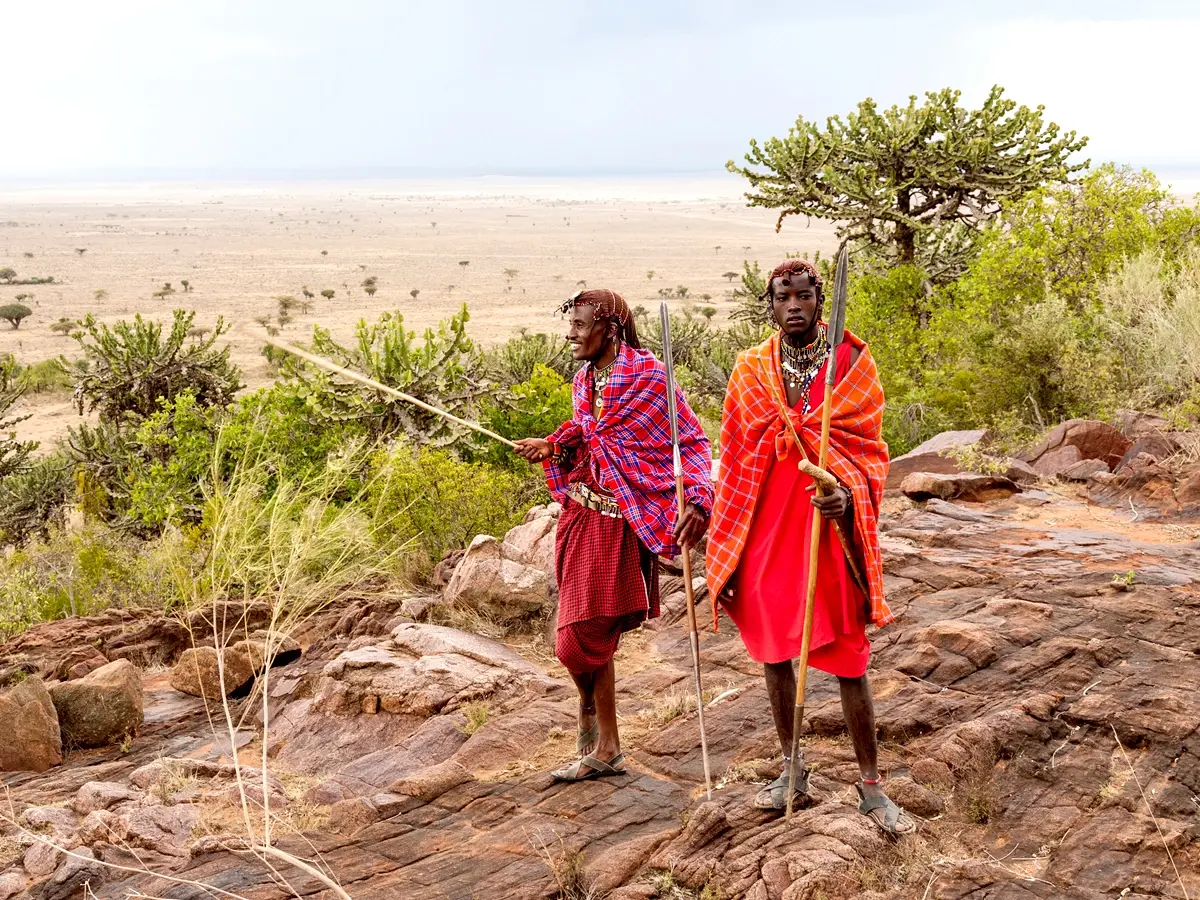
Hailing from the Nilotic ethnic group, the Maasai are renowned for their unique culture and traditions that set them apart in the landscape of African diversity. Their language, Maa, carries the echoes of an ancient past, spoken by a community that has thrived in the Great Rift Valley region for generations.
The Maasai tribe, believed to have originated from the Nile Valley, migrated southward around the 15th century, eventually settling in the Serenegti, Tanzania. Their presence is also prominently felt in the Masai Mara, an extension of their ancestral land in Kenya. Despite modern challenges and changing landscapes, the Maasai persist as guardians of their heritage, forging a unique and enduring legacy in East Africa.
Journey with us as we uncover the enigmatic Maasai, a living symbol of Africa’s cultural diversity.
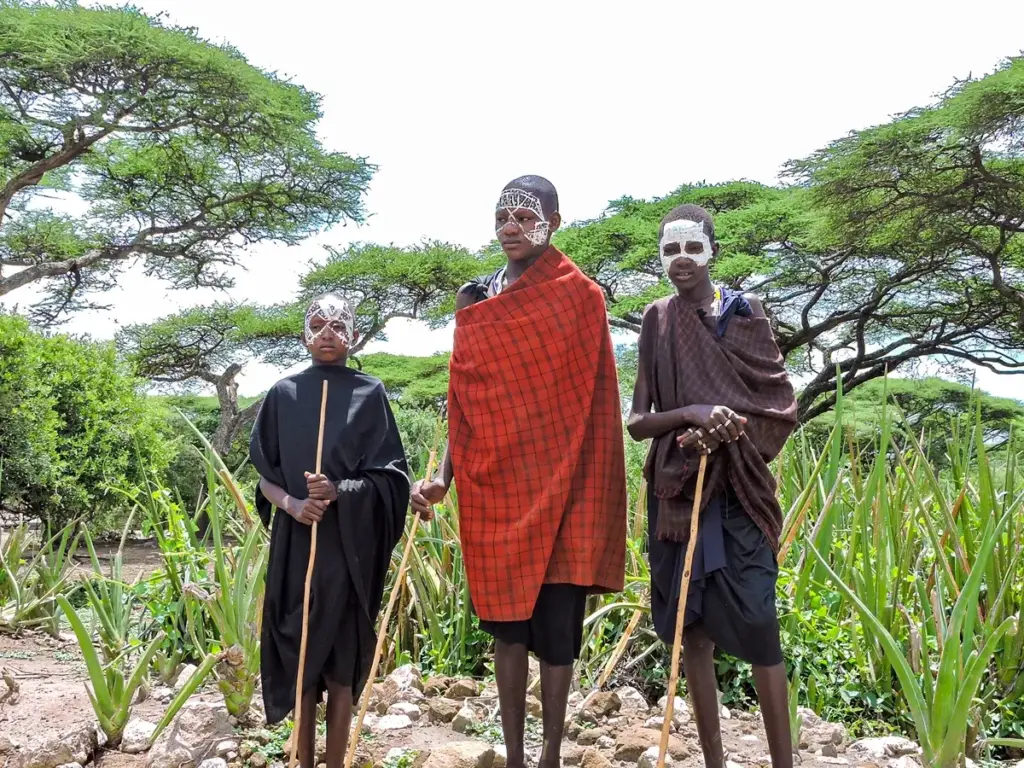
Generations of Maasai have coexisted with the wildlife of the Serengeti. Unlike many other African tribes, the Maasai are semi-nomadic and pastoral: they live by herding cattle and goats.
Guided by an unwavering respect for nature and rooted cultural beliefs, the Maasai employ indigenous knowledge to predict wildlife movements, skillfully averting conflicts. Their traditional management practices, including rotational grazing and controlled burning, showcase their commitment to conservation.
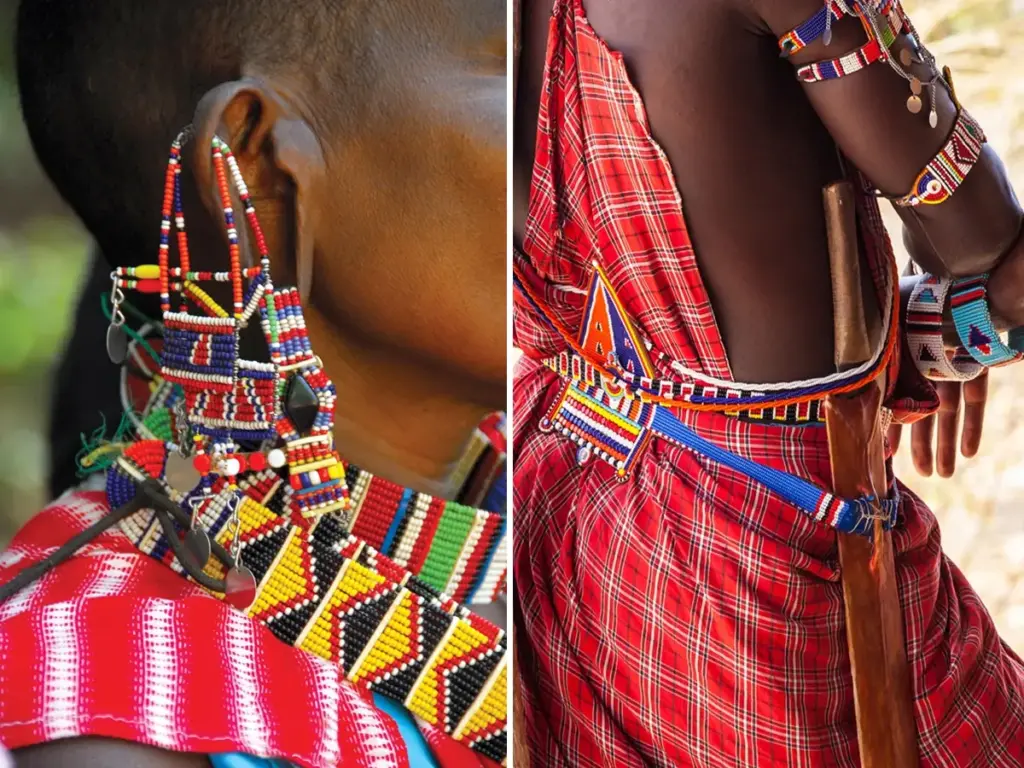
The Maasai people are undeniably unique. One of the most striking aspects of their identity is their vibrant red shukas (cloaks), which protect against the harsh African sun and symbolize their cultural pride and heritage. Intricate beadwork, often adorning their necks, wrists, and ankles, tells a story of tradition and individual identity.
At the heart of Maasai culture is the conviction that God, known as Engai or Enkai in the tribe’s Maa language, specifically crafted cattle for them, designating them as custodians of all the world’s bovine treasures. For the Maasai, existence revolves around the accumulation and grazing of expansive herds of cows, with goats playing a subsidiary role. Beyond serving as the primary source of income, as livestock are exchanged for various goods or cash, cows hold a significant position in the communal customs of Maasai life.
The Maasai people maintain a diet primarily centered around their pastoral lifestyle. Their traditional cuisine revolves around the consumption of milk, blood, and meat, primarily sourced from their cattle.
Here is the twist – they mix fresh or curdled milk with cow’s blood, which is done in a harmless process that serves up those essential nutrients with a dash of tradition!
The Maasai are not just the Serengeti’s residents but its ultimate protectors. They are the superheroes of wildlife conservation, partnering with local and international organizations to shield and nurture the stunning biodiversity of the Serengeti. Their deep connection to the land and its inhabitants makes them the most incredible allies in the mission to save the day for Mother Nature.
In Maasai traditions, the naming of a child is deferred until they reach three months of age. At this juncture, a significant ceremony called Enkipukonoto Eaji, meaning “coming out of the seclusion period,” is organized. Preceding the ceremony, the mother and child undergo a period of isolation during which they permit their hair to grow long. Shaving off the hair holds symbolic significance, representing a new beginning and a fresh start for the child.
Did you know that among the Maasai, love comes in multiples? The Maasai practice polygamy, meaning one man can marry many wives as long as he pays the bride price, which is through their cattle.
In the past, young Maasai men demonstrated their warrior prowess, known as ‘Morani,’ through a rite of passage involving the ritual killing of a lion. Using only iron spears, they showcased their bravery individually or in groups. This initiation, ‘ ala-mayo,’ targeted male lions, as female lions were deemed sacred progenitors of life. While East Africa has outlawed ritual lion-hunting, contemporary Maasai will only resort to killing a lion if it poses a threat to their livestock. The fierce bravery of the Morani remains highly esteemed in Maasai culture today.
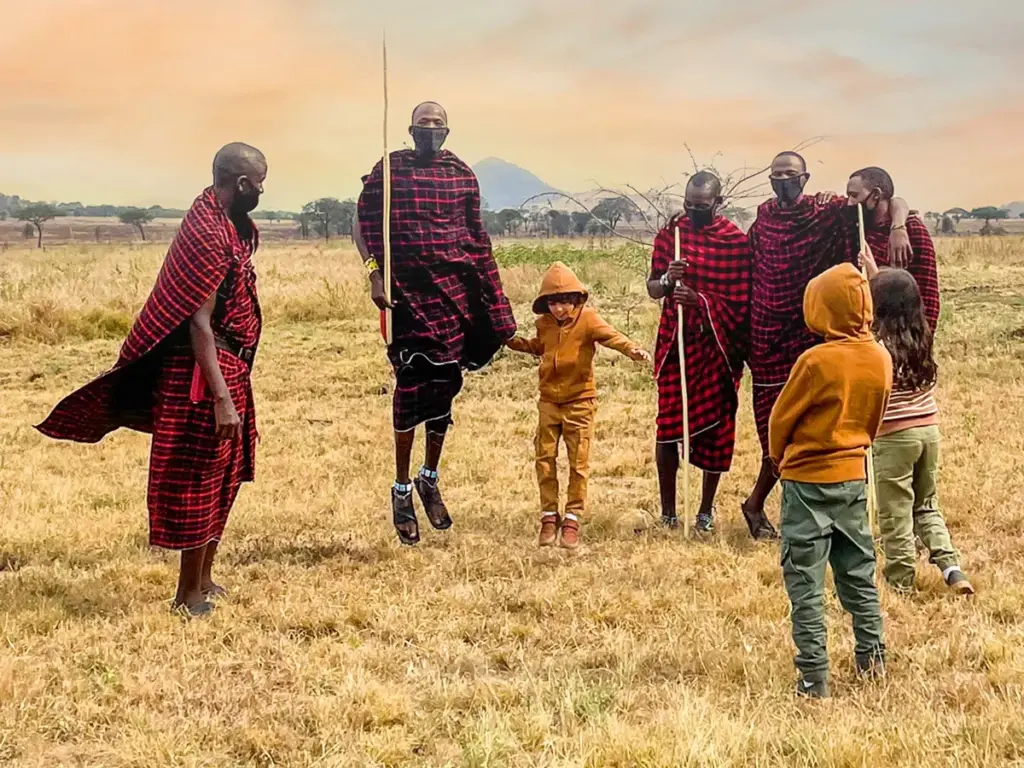
Experience the rhythm of the Serengeti with Maasai music, an enchanting cappella journey that mirrors the wild landscapes. Witness Maasai warriors showcase their incredible strength and agility with the iconic “Adumu” jumping dance, forming a circle of energy and excitement.
Travelers often find themselves dazzled by the fantastic adumu dance, and some brave souls even take a shot at jumping. Matching the soaring heights of the warriors is a challenging feat. The Maasai have been dancing since childhood – it is like they were born with a safari rhythm in their veins.

Maasai crafts are a brilliant fusion of artistry and cultural symbolism, with their handcrafted jewelry being a prime example. Beadwork adorns these vibrant pieces, each piece identifying the wearer’s age, sect, social standing, and marital status.
Did you know? In Maasai culture, the vivid red beads symbolize courage, strength, and community unity, closely linked to the life-giving essence of cattle’s blood. When you see those bold red beads, remember they are the Maasai’s secret weapon for unity and resilience.
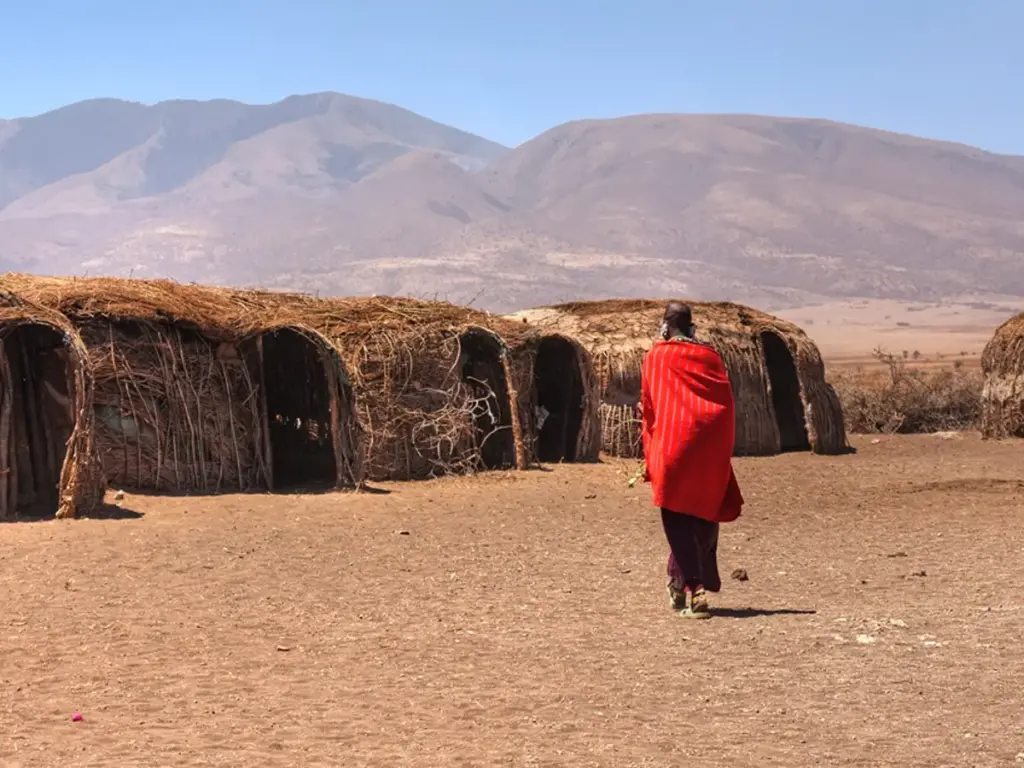
Join us on a Maasai Village Tour with One Nature Nyaruswiga, where the crimson- clad figures welcome you with intricate beadwork. Roam through traditional Maasai homes, ‘Manyattas,’ defying Africa’s elements. Participate in age-old dances, try your hand at crafts, and master the art of spear-throwing. Dance with the Maasai, where each movement narrates a tale of joy and celebration.
This is your chance to witness the Maasai way of life. Do not let it slip away – reserve your spot today and create unforgettable memories that will stay with you forever!